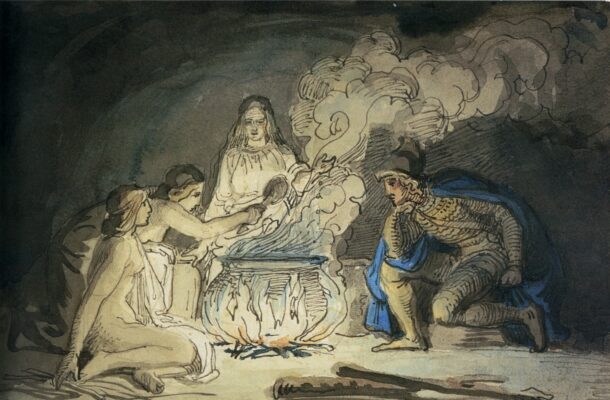We are the stories we tell about ourselves

We tend to equate myths and legends, however the two words are not interchangeable and mean very different things.
A legend is a genre of folklore that consists of a narrative featuring human actions, believed or perceived to have taken place in human history. Narratives in this genre may demonstrate human values, and possess certain qualities that give the tale verisimilitude. Legend, for its active and passive participants, may include miracles. Legends may be transformed over time to keep them fresh and vital.
Myths are an attempt to explain the unknown. Religion is a myth – most cultures assume there is a guiding spirit of some sort to give a reason for the existence of the Earth and everything in it as well as the cosmos. We tend to name and worship this god in various ways; even fight or kill those who worship in a different way. The myths most familiar to us are the Egyptian, Greek and Scandinavian ones. The contemporary meaning of the word ‘myth’ is that which is inherently untrue; however, originally it was used as a teaching method used to understand or grasp the unknown environment in which we live. It was never meant to be believed empirically.
The dictionary definition of a myth would be stories about gods. So then you have to ask the next question: What is a god? A god is a personification of a motivating power or a value system that functions in human life and in the universe – the powers of your own body and of nature. The myths are metaphorical of spiritual potentiality in the human being, and the same powers that animate our life animate the life of the world. But also there are myths and gods that have to do with specific societies or the patron deities of the society. In other words, there are two totally different orders of mythology.
There is the mythology that relates you to your nature and to the natural world, of which you’re a part. And there is the mythology that is strictly sociological, linking you to a particular society. You are not simply a natural man, you are a member of a particular group. In the history of European mythology, you can see the interaction of these two systems. Usually the socially oriented system is of a nomadic people who are moving around, so you learn that’s where your centre is, in that group. The nature-oriented mythology would be of an earth-cultivating people.
Now, the biblical tradition is a socially oriented mythology. Nature is condemned. In the nineteenth century, scholars thought of mythology and ritual as an attempt to control nature. But that is magic, not mythology or religion. Nature religions are not attempts to control nature but to help you put yourself in accord with it. But when nature is thought of as evil, you don’t put yourself in accord with it, you control it, or try to, and hence the tension, the anxiety, the cutting down of forests, the annihilation of native people. And the accent here separates us from nature. The Australian aborigines are animists – they see their god in everything: rocks, trees, hills, etc and this is why they place so much emphasis on looking after the land.
A shaman of a Caribou Eskimo tribe in northern Canada named Igjugarjuk, told European visitors that the only true wisdom lives far from mankind, out in the great loneliness, and can be reached only through suffering. ‘Privation and suffering alone open the mind to all that is hidden to others.’ Suffering and privation are the generally accepted methods used by religious peoples around the world: the desert fathers in Egypt, early Christian monasteries, Tibetan monks, Mohammad, the Buddha, etc. Myth and ritual go hand in hand – one enhances the other in the psychology of the human mind.
Why haven’t the priests become the shamans of American society? The difference between a priest and a shaman is that the priest is a functionary and the shaman is someone who has had an experience. In our tradition it is the monk who seeks the experience, while the priest is the one who has studied to serve the community. Catholic monks have no problems understanding the Buddhist monks, but that it was the clergy of the two religions who were unable to understand each other.
The person who has had a mystical experience knows that all the symbolic expressions of
it are faulty. The symbols don’t render the experience, they suggest it. If you haven’t had the
experience, how can you know what it is? Try to explain the joy of skiing to somebody living in
the tropics who has never even seen snow. There has to be an experience to catch the message,
some clue – otherwise you’re not hearing what is being said.
Greek and Latin and biblical literature used to be part of everyone’s education. Now, when these were dropped, a whole tradition of Occidental mythological information was lost. It used to be that these stories were in the minds of people. When the story is in your mind, then you see its relevance to something happening in your own life. It gives you perspective on what’s happening to you. With the loss of that, we’ve really lost something because we don’t have a comparable literature to take its place.
These bits of information from ancient times, which have to do with the themes that have supported human life, built civilisations, and informed religions over the millennia, have to do with deep inner problems, inner mysteries, inner thresholds of passage, and if you don’t know what the guide-signs are along the way, you have to work it out yourself. But once this subject catches you, there is such a feeling, from one or another of these traditions, of information of a deep, rich, life-vivifying sort that you don’t want to give it up. We need myths and legends. What a boring world it would be if the Loch Ness monster, Bigfoot, the Yeti or the Australian bunyip were proved to be fact or fiction.
Myths teach us that we can turn inward, and we begin to get the message of the symbols. Read other people’s myths, not those of our own religion, because we tend to interpret our own religion in terms of facts – but if we read the other ones, we begin to get the message. Myth helps us to put our minds in touch with this experience of being alive. It tells us what the experience is. Marriage, for example. What is marriage? The myth tells us what it is. It’s the reunion of the separated duad. Originally we were one. We are now two in the world, but the recognition of the spiritual identity is what marriage is. It’s different from a love affair. It has nothing to do with that. It’s another mythological plane of experience.
When people get married because they think it’s a long-time love affair, they’ll be divorced very soon, because all love affairs end in disappointment. But marriage is recognition of a spiritual identity. If we live a proper life, if our minds are on the right qualities in regarding the person of the opposite sex, we will find our proper male or female counterpart. But if we are distracted by certain sensuous interests, we’ll marry the wrong person. By marrying the right person, we reconstruct the image of the incarnate God, and that’s what marriage is.
It is a part of the Cartesian mode to think of consciousness as being something peculiar to the head, that the head is the organ originating consciousness. It isn’t. The head is an organ that inflects consciousness in a certain direction, or to a certain set of purposes. But there is a consciousness here in the body. The whole living world is informed by consciousness. It is possible that consciousness and energy are the same thing somehow. Where you really see life energy, there’s consciousness. Certainly the vegetable world is conscious. And when you live in the woods you can see all these different consciousnesses relating to themselves. There is a plant consciousness and an animal consciousness, and we share both these things. We eat certain foods, and the bile knows whether there’s something there for it to go to work on. The whole process is consciousness. Trying to interpret it in simply mechanistic terms won’t work.
All major religions incorporate meditation into their rituals. Many people don’t realise it but all of life is a meditation, most of it unintentional. A lot of people spend most of life in meditating on where their money is coming from and where it’s going to go. If we have a family to bring up, we’re concerned for the family. These are all very important concerns, but they have to do with physical conditions, mostly. But how are we going to communicate spiritual consciousness to the children if we don’t have it yourself? How do we get that? What the myths are for is to bring us into a level of consciousness that is spiritual.
The word “God” properly refers to what transcends all thinking, but the word “God” itself is something to think about. Now we can personify God in many, many ways. Is there one god? Are there many gods? Those are merely categories of thought. What we are talking and trying to think about transcends all that. Each of us views his or her religion in a different way; we should accept our differences and try for a more harmonious existence.
Heraclitus said that for God all things are good and right and just, but for man some things are right and others are not. When you are a man, you are in the field of time and decisions. One of the problems of life is to live with the realisation of both terms, to say, “I know the centre, and I know that good and evil are simply temporal aberrations and that, in God’s view, there is no difference.”
The headline image depicts Hotherus and the Wood Maidens by Lorenz Frølich (1820-1908).

Alan Stevenson spent four years in the Royal Australian Navy; four years at a seminary in Brisbane and the rest of his life in computers as an operator, programmer and systems analyst. His interests include popular science, travel, philosophy and writing for Open Forum.













